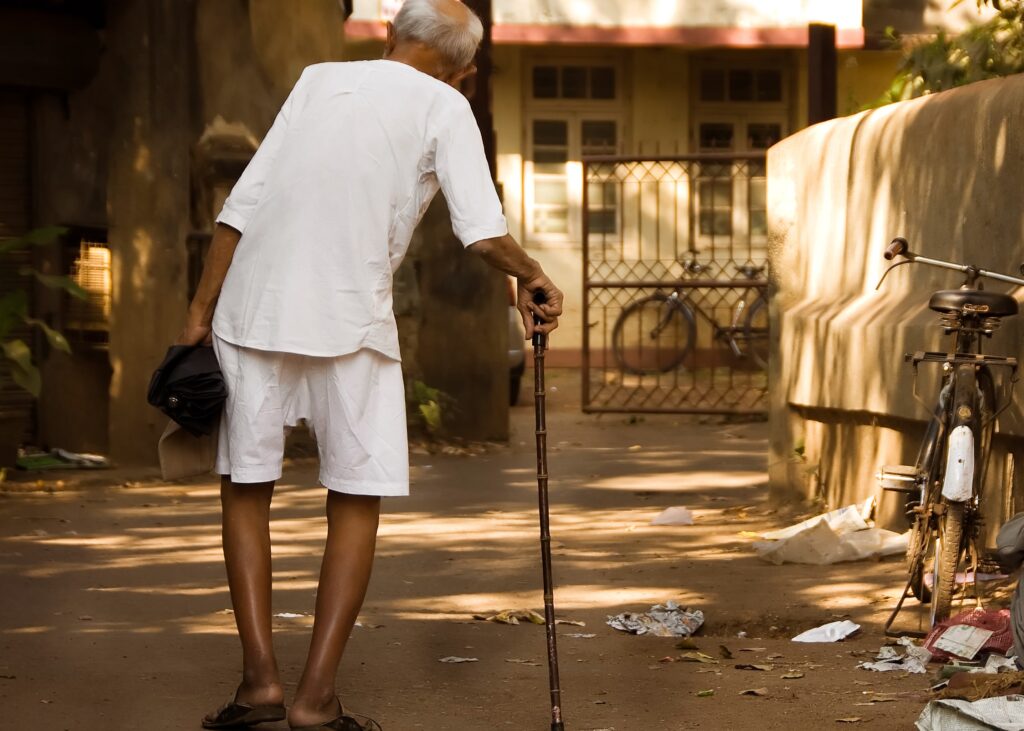

Aging is not about "getting old", it is about "continuing living"

Aging is a gradual, continuous process of natural body change referred to a medical condition called sarcopenia as the universal normal involuntary decline in lean body mass that occurs with age primarily due to loss of skeletal muscles. Lean body mass is at its peak for the people in their early 40s when it forms up to 50% of the total body weight and then it starts to reduce. It can reduce to 25% in person aged 75-80. These can cause severe issues of stable mobility leading to physical activity decline which further lead to major health issues such as heart diseases, diabetes etc. This decline in muscle activity can be prevented with assistive technologies like Endoenergy systems Exos which are aimed at helping elderly people having difficulties in moving to remain active independently and with dignity to “continue living”.
Problems with Aging
Aging is a natural process that may present a decline in the functional status of an individual and is a common cause of the subsequent loss of activities of daily living. Activities of daily living (ADLs) comprise of both essential and routine aspects of self-care, including personal care, mobility, and eating that people do every day without assistance. The six basic ADLs are eating, bathing, getting dressed, toileting, transferring, and walking or moving around. Many elderly persons suffer mild to acute degrees of physical and cognitive degeneration. The progressive nature of these impairments often leads to loss of independence affecting quality of life. The issues with aging could be on:
Mobility is essential for living, whether it is simply standing without falling to cook your dinner or getting up and walking across a room to go to the bathroom. Loss or difficulty in mobility has profound social, psychological, and physical consequences. Loss of muscle strength associated with aging will affect a person’s ability to move around at some point and needs addressing as life expectancy increases. Important issues include unsteadiness while moving around, difficulty getting in and out of a chair, or falling or going up/down stairs. Muscle weakness, joint problems, pain, diseases, and neurological difficulties can all contribute to mobility problems.
Manipulation is essential for performing detailed handling tasks for everyday living and include reaching for objects, grabbing them and moving them around as required. As we age, the ability to perform a normal dexterous task can be lost due to reduced functionality in terms of accuracy, power and speed.
Balancing means being able to control and maintain the body’s position, while moving or remaining still which helps in walking without staggering, get up from a chair without falling, climb stairs without tripping, and bend over without falling. Good balance is important to help getting around, stay independent, and carry out daily activities.
The ability to control balance deteriorates with age as a result of alterations in the vestibular, visual, somatosensory, musculoskeletal, and central nervous systems.
Cognitive is essential for retaining independence. Aging is also associated with a decline in cognitive capabilities, such as memory loss, decision making processes and communication skills. Such cognitive impairments can impose huge burdens on elderly people in carrying out normal daily living activities independently as simple tasks such as going out for buying milk can present insurmountable barriers. Endoenergy system Exos has the ability to adopt advance intelligent features to support the cognitive reductions as well as the physical abilities.
Why Exoskeletons
A major challenge as a person ages is the prevention of loss of physical functionality as this helps in maintaining the quality of life with independence, dignity and freedom for as long as possible. Both physical and cognitive impairments due to aging are important, but for independence, the physical changes can be more easily addressed by adopting assistive technologies such as Endoenergy systems Exos in normal daily living.
Technology requirements for men and women are different and customized solutions are essential for maximum benefit. Endoenergy systems Exos are totally customizable and upgradeable to meet the increasing assistance as the individual’s requirements for physical assistance grows with age.

Non-medical exoskeletons are assistive systems which are used for supplementing or augmenting physical capabilities of people. The person can be adults, elderly people, children, workers and soldiers etc. The Endoenergy system’s main focus is on developing exoskeletons for healthy elderly people to maintain good quality of life with independence, dignity and freedom.
The non-medical exoskeletons are covered by ISO TC299 WG2 (Service robot safety) who has produced ISO 13482 as the safety requirements for personal care robots in 2014; ISO 13482 includes wearable exoskeletons as physical assistant robots (restraint and restraint free types). ISO 23482-1 and -2 has been recently published as Technical Reports presenting application guide and test methods for ISO 13842.
Why Endoenergy?
Industry 4.0 of Independent living
Endoenergy Systems is developing a wearable assistive technology for elderly persons starting to have problems to move around such as getting up and going to the bathroom, standing freely to cook, maintaining balance, to go up/down stairs freely. Over 15 years of extensive research and development has led us to create advanced exoskeletons to support people in the real world. Key features of Endoenergy’s assistive EXOs are:
- Affordable
- ISO-IEC Safety Certified
- Easy to use
- High Customizable
- Effective
- Comfortable
- Aesthetic


